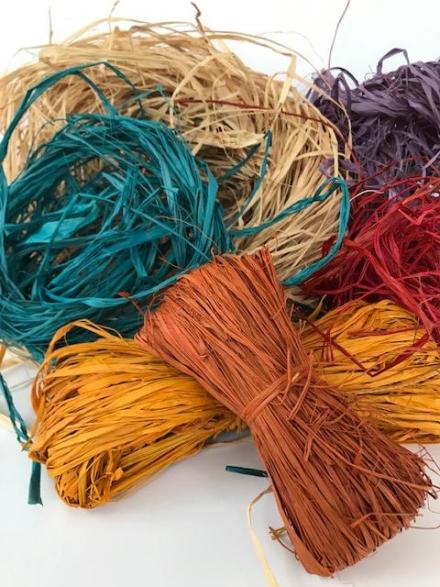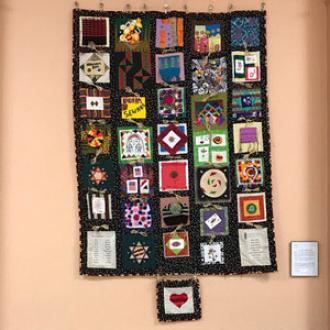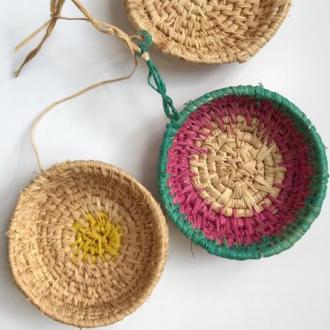
Many craft makers in African nations employ raffia (from the tall, striking raffia palm) to make mats, baskets, place mats and other household goods. The raffia palm is native to tropical regions of Africa, particularly Madagascar. In the RAW artisan community, Zainabu Hakili originally from Democratic Republic of the Congo makes colorful baskets from reeds and raffia fibers. She rolls the reeds into bundles and then affixes these to each other with raffia. RAW sources her raffia for her from a company called Super Moss.
As a multidimensional sacred/secular fiber, raffia’s character derives from the raffia palm’s unusual physical shape. These palms grow to as much as 52 feet tall. Their leaves (that is, the palm fronds) are quite long, reaching from the trunk of the palm far into the air. The raffia fibers are actually the veins of these long fronds. The fibers are extracted and then rolled together for strength; then these bundles are dried, in preparation for being made into mats and so on.
Within African traditional crafts, which also sometimes had strong connections to the arts of royal courts, the famous Kuba cloths were made of raffia, tufted and cut into intricate geometric designs. Raffia was also used in making special ritual garb. In some villages in the Democratic Republic of Congo, for instance, raffia was fashioned into ritual dancers’ costumes. This head-to-toe costume masked the dancer’s human identity and transformed the person into a supernatural being for the duration of the dance event.



